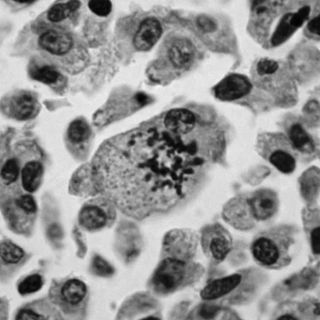
Who Is a “Biological” Woman?
The Imane Khelif boxing controversy shows that long history of gender testing in sports complicates categories like cis and trans.

Yesterday, Imane Khelif broke her silence about the media furore over her gender in a press conference: “After the media frenzy and after the victory, there was a mix of joy and at the same time, I was greatly affected, because honestly, it wasn’t an easy thing to go through at all. It was something that harms human dignity.” Khelif is guaranteed to win an Olympic medal now, after defeating Hungary’s Luca Hamori – and shook her hand, despite Hamori posting an offensive meme about Khelif the previous day.
The controversy began last week, when Italian boxer Angela Carini quit the women’s 66kg division match in 46 seconds, after receiving the opening punches from Khelif. Carini broke down and refused to shake Khelif’s hand later saying she quit the match to ‘preserve her life.’ This has rekindled heated debates around Differences of Sexual Development (DSD), and eligibility concerns around whether athletes with rare genetic conditions, hormones and reproductive organs should be allowed to compete in the women’s category. Khelif isn’t the only one: she and Taiwan’s Lin Yu-ting, both assigned female at birth, have previously competed in the 2020 Olympics in the women’s category. But both failed the “sex test” conducted by the International Boxing Association (IBA), which disqualified them at different stages at the World Boxing Championships in New Delhi last year.
It’s worth noting that the International Olympic Committee (IOC) stripped the International Boxing Association of its status as a global boxing governing body, due to several governance, ethical and funding controversies. The IOC thus enforced their latest guidelines on fairness in gender inclusion. In a press conference after the match with Carini, Mark Adams of the IOC condemned the misreporting and furor over Khelif, saying that “the testosterone test is not a perfect test. Many women can have male levels of testosterone and still be women and compete as women,” and adding that both athletes are women who have both won and lost against other women in the past.
All the Arguments You Need: To Prove It’s Fair for Trans, Intersex Athletes to Compete in Consistence With Their Gender Identity
“We have two boxers who are born as a woman, who have been raised a woman, who have a passport as a woman, and who have competed for many years as women,” said Thomas Bach, IOC president. “And this is the clear definition of a woman. There was never any doubt about them being a woman.”
And yet, right-wing figures like Italian Prime Minister Giorgia Meloni, Elon Musk and JK Rowling have attacked Khelif, with many even going so far as to calling her a man. Neither Khelif nor Yu-ting identify as intersex or transgender, the Independent reported. The anti-trans backlash against the match despite that calls into question the trans-exclusionary ideology’s insistence on defining sex based on arbitrary and unpredictable factors like sex hormones. Moreover, Khelif is part of a long history of “cis” women athletes – those with certain biological sex characteristics – scrutinised and accused of being men. It raises the question: is there such a thing as a trans or cis body?
The World Athletics rules on Differences of Sex Development (DSD) don’t apply to athletes competing as men. Instead, the DSD regulations apply to “legally female” or intersex athletes with elevated blood testosterone; XY chromosomes; testes and no ovaries; and androgen sensitivity. These athletes are required to undergo treatment to suppress their testosterone levels – despite a lack of clear evidence that testosterone actually does translate to a physical advantage. It all goes back to anxieties about gender performance that came to a head when women began participating in the masculine realm of sport itself.
In 1936, at the Olympics held in Nazi Germany where racial identity and gender purity shaped Nazi beliefs, officials influenced the International Olympic Committee into surveilling gender, Vox reported. In the 1940s, all women were mandated to provide a “certificate of femininity” to verify their sex by a physician, a practice that included visual inspections, physical examinations, and has evolved over the years to now include testosterone level and chromosome testing. The governing body, International Amateur Athletic Federation (IAAF), now called World Athletics, allowed officials to test women based on “perception,” and conduct “nude parades” of their bodies. Boards of surgeons and endocrinologists would often be involved to “confirm” an athlete’s gender – an ordeal eerily similar to what trans women go through today.
World Chess Federation Bans Trans Women from Women’s Chess
The results are often inconclusive and contradictory, and in many instances violate athletes’ human rights and bodily autonomy. Though JK Rowling claims Khelif may have destroyed her opponent’s ambition, the opposite – women scrutinised for their gender being exiled from elite sport – has always historically been true. In 1964, Polish sprinter Ewa Kłobukowska competed and won a Gold at the height of the Cold War. After media scrutiny over her appearance, she was the first to be tested under the IAAF’s “chromosome” test. The results were never revealed but Kłobukowska was accused of being a “male imposter” based on a chromosome “abnormality” and stripped of her medals. Years later, she was pregnant and had a son. The IAF returned her medals, but not before her career was destroyed.
Many people are assigned a gender at birth based on external sex characteristics at birth. As athletes, they’re raised and trained to compete as per their sex assignment. Sometimes, chromosome variations or internal sex organs (such as testes in women or uterus in men) are only discovered much later – during family planning, abnormalities in secondary sex characteristics, or sports testing. But it doesn’t always translate to an advantage.
Take the case of two other women who were found to have XY chromosomes, but who had “androgen insensitivity” – meaning their bodies don’t respond to testosterone. Both suffered the same fate, decades apart. Spanish hurdler María José Martínez-Patiño, and Indian sprinter Santhi Soundararajan were both barred from elite sports in 1985 and 2006 respectively. They had a Y chromosome despite also having androgen insensitivity. Both lost their careers over the public outrage – and the latter attempted suicide.
A few years later, one athlete would go on to suffer an even worse ordeal. Ugandan Athlete Annet Negesa qualified to compete in the 2012 London Olympics, but was informed weeks before the competition that she couldn’t participate due to her blood tests. In November that year, she woke up in hospital, having had surgery to remove her internal testes – without her consent. Oestrogen was essential to recover, but doctors withheld it citing instructions from the IAAF. Without aftercare, she couldn’t perform – and was dropped from her scholarship. She wasn’t the only one: one study showed that many athletes underwent surgeries that had nothing to do with testosterone reduction – such as clitoris reductions, plastic surgery, and oestrogen replacement – possibly because they were told to “prove” they were women, according to Katrina Karkazis, a bioethicist speaking to the New York Times.
Then, there were the athletes who refused to comply with these DSD rules, arguing they were discriminatory and unfair: Caster Semenya and Dutee Chand. When Caster Semenya represented South Africa and broke records in the 800m women’s track event at the Berlin Championships in 2009, there was widespread outrage – and Semenya was forced to go through a “gender verification” process. South Africa condemned the move, but World Athletics imposed a testosterone limit of 10.0nmol/L for DSD athletes participating in women’s categories thereafter. The two options for athletes with DSD were: suppress testosterone medically, or drop out.
But in 2015, Indian sprinter Dutee Chand challenged that rule at the Court of Arbitration for Sport (CAS). The CAS ruled in Chand’s favour, and asked World Athletics to prove how much of an advantage testosterone actually conferred. The testosterone limit was then lifted. But in 2019, World Athletics reinstated it – this time limiting it to 5.0nmol/L. Caster Semenya challenged this at the CAS, but she lost the case.
These were two athletes who refused to comply with rules about suppressing testosterone. But what about those who did comply? In 2021, Namibian sprinter Christine Mboma tested for high testosterone – and became one of the first athletes to comply with the World Athletics' rules by consensually taking oestrogen to bring it down. She says it made no difference. The scientific consensus on the link between testosterone and physical strength remains unclear: some studies show a positive link, some show no conclusive relationship, and still others correlate high testosterone with worse athletic performance. A study in Sports Med notes there is “no convincing evidence to support the view that hyperandrogenism is associated with performance advantage in female athletes” and that forcing medical procedures on such athletes is thus unethical. The World Medical Association says this kind of evidence linking testosterone to athletic performance is “weak.”
IAAF’s Caster Semenya Decision Arbitrarily Dictates What Is Female
Dr. Silvia Camporesi, a bioethicist at King’s College, further noted that such tests fail to consider other “biological” and genetic advantages – like height, weight, musculature – to settle the question of whether advantage is inherently unfair. Take the fact that Michael Phelps’ body produces half the lactic acid of other athletes, giving him more stamina, which isn’t considered an “unfair” advantage. Further, studies have found that some men in elite sports have lower testosterone levels than the average male athlete; some even lower than 5.0nmol/L. So why do sports bodies single out sex differences for women’s categories alone?
“The important question here is not whether some sex traits can confer athletic advantages,” writes Grace Huckins in The Scientific American, “but whether those advantages are so meaningful and so incontrovertible that they should prevent a woman athlete such as Semenya from competing against other women.”
Besides: “we should remember that the most significant factors associated with the Olympic medal tables are personal and national income,” Bruce Kidd, adviser to Dutee Chand and Olympian, told Vice. “No effort is ever made to balance those incredible advantages.”
But the consensus on what qualifies as the female sex has only taken a turn for the worse. In the case of World Athletics vs Caster Semenya in 2019, the language of “biological males” began to be used for the first time. Paradoxically, despite a gender testing policy that closely resembles the restrictive medico-legal bureaucracy that trans people have to go through to navigate the world, the World Athletics has used trans-affirming rhetoric to defend its scrutiny of women it suspected to be “biologically male.” Though Semenya argued that she isn’t even the fastest in the women’s category – she’s the fourth fastest in the 800m category – World Athletics argued that hormonal medications are “gender affirming care” and that athletes like Semenya should “want” to take them if they were really women.
Khelif, who is a UNICEF ambassador, says her goal is to win a gold medal and inspire girls – especially considering her father didn’t approve of girls participating in the sport while she was growing up. The heated debate about her gender, and the pressure to "prove" it, speaks to the anti-trans ideology’s shaky claim over womanhood – where the goalposts shift according to biological markers that themselves aren’t set in stone.
Related


Early-Onset Cancer Is on the Rise. Why?
